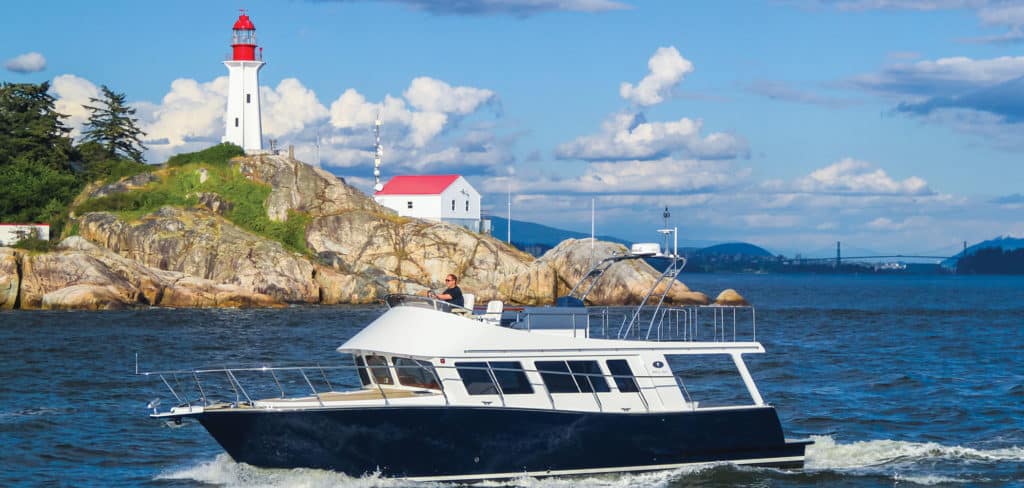
The bow of the Coastal Craft 56 IPS had barely rediscovered its waterlines after a blistering 40-knot run across Vancouver’s Howe Sound when Jeff Rhodes, the builder’s CEO, asked the magic question: “Want to drive?” I gleefully took over the controls at the lower helm, and the 56 was off like a shot. But rather than having the hefty feel I’d expect from a boat of this size and complexity, the yacht was light on her feet. A rooster tail plumed astern as she banked and rolled through tight turns, including a few improvised moves to dodge logs and deadheads — common byproducts of the Pacific Northwest’s logging industry, and an impetus for why Rhodes builds all Coastal Craft hulls from aluminum. When Rhodes founded Coastal Craft in 1996 in Gibsons, British Columbia, his business plan focused on hand-built aluminum workboats for the logging, fishing and whale-watching trades. In 2001, two customers asked if he could finish the belowdecks space aboard one of his workboats to create an SUV-style yacht. Rhodes accepted the challenge and later brought one of the sport-utility cruisers to the 2001 Vancouver International Boat Show. “I knew we had been building successful workboats for the first five or six years, but I was always looking to do something different,” Rhodes says. By 2005, Coastal Craft had some 40 employees building high-performance aluminum cruising yachts for the Pacific Northwest’s challenging conditions, which include big tidal swings, deadheads, mighty currents, cold temperatures, deep soundings, rocky shores, errant whirlpools and, most months, drumbeat-steady rains. Thanks to the Gibsons location, Coastal Craft staff can sea-trial designs while establishing deep roots in the maritime community.
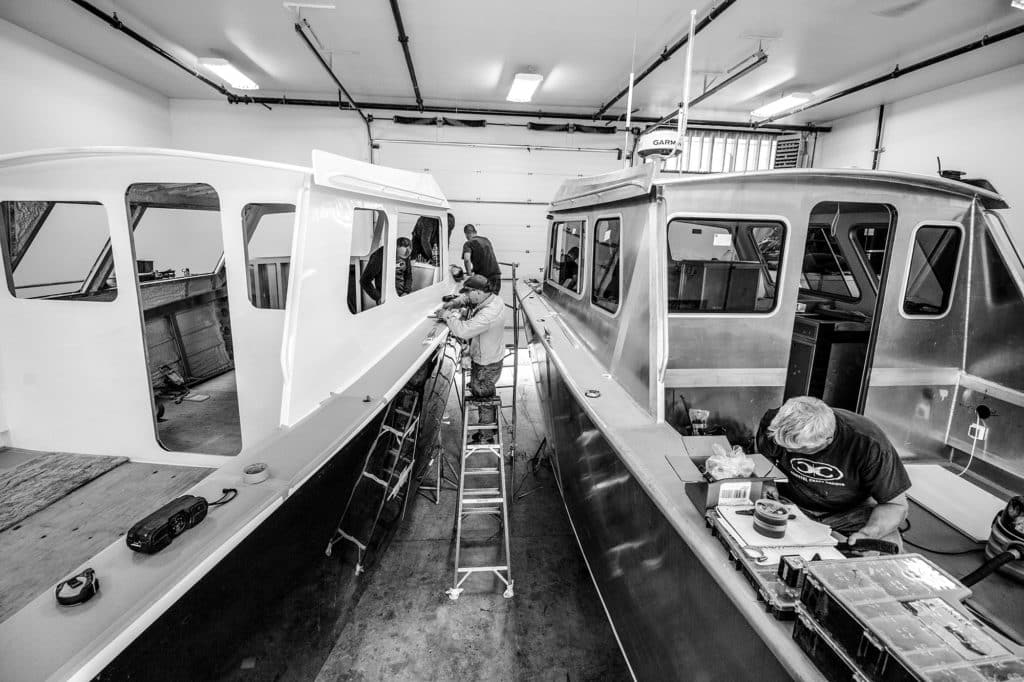
“It’s a nice lifestyle,” Rhodes says. “My employees can afford more luxuries, and it’s only an hour from Vancouver.”
That hour is typically commuted via ferry or barge, which is how all materials arrive at Coastal Craft’s shipyard. The setup occasionally adds latency to UPS deliveries, but the benefits far outweigh the inconvenience when it comes to building handcrafted vessels.
“Our waters aren’t typical, and our boats are regionally specific,” Rhodes says. “They don’t suit everyone’s budget, but if customers value high-quality craftsmanship and components, they’ll see we don’t compromise.”
Rhodes, 51, grew up boating in British Columbia and spent his childhood summers studying nautical lines, forms and functions from his local dock. His love and appreciation for vessels continue to inspire Coastal Craft’s exterior designs.
“I draw all the boat concepts myself,” Rhodes says, adding that he regularly consults with naval architects and designers. “Most often I give them the profiles, inside profiles, deck plans and cross-sectional plans, but I rely on their engineering and hydrodynamics. We work really closely together within the scope of my concepts.”
Aluminum has always been Rhodes’ chosen building material, even before his workboat days.
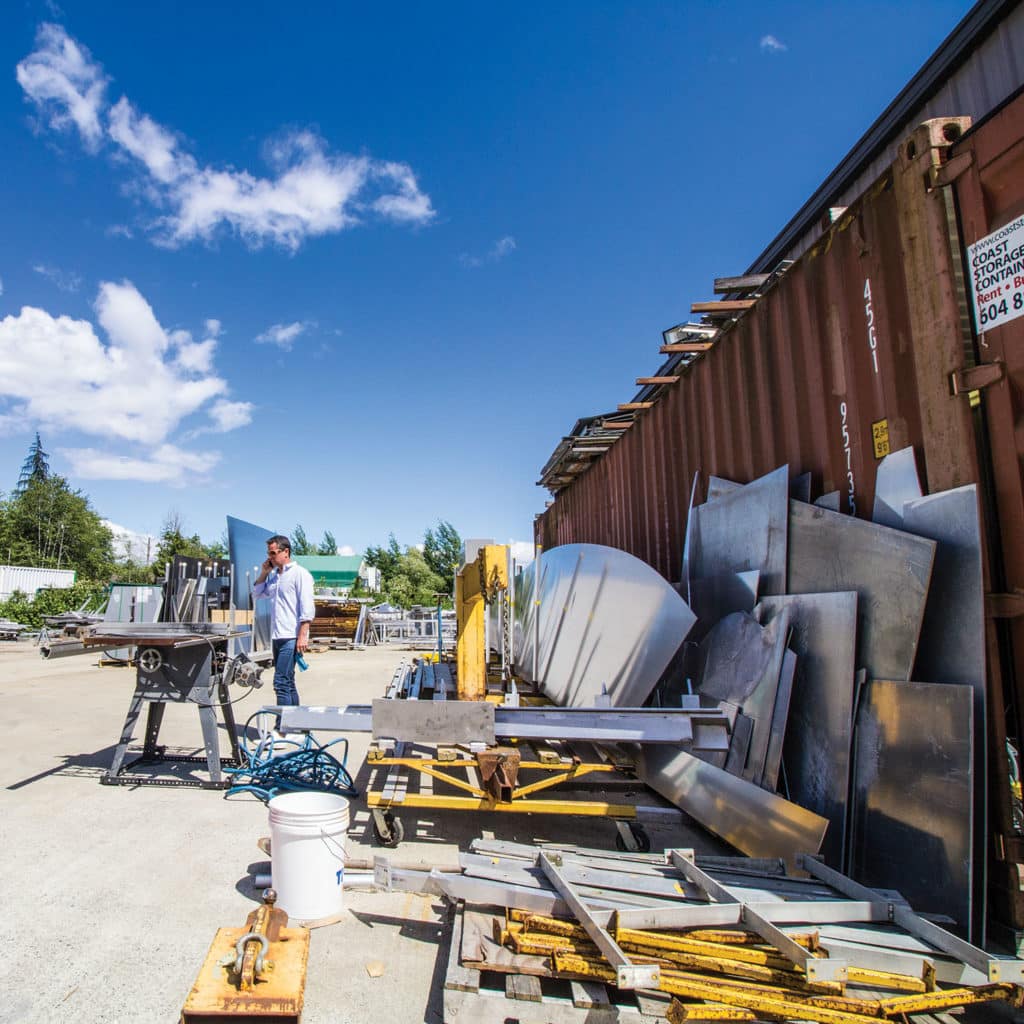
“I liked metal boats, especially the German and Dutch aluminum yachts. I thought they were really cool,” says Rhodes, who describes aluminum as lightweight, strong and less brittle than carbon fiber. “We build planing hulls, so weight is a factor, and there’s a lot of debris in the water in the Pacific Northwest.”
In addition to being aesthetically pleasing and quiet, aluminum’s strength is a reassuring comfort when running fast in logging country, as I learned on Howe Sound.
“Strength of vessel is real peace of mind,” Rhodes says.
Today, Coastal Craft builds a 40, 45, 56 and 65, as well as the new Profish 30 and 33 models. About half are production yachts and half are semicustom.
“There’s a wide spectrum on the larger boats — there’s a lot of opportunity” for customization, he says.
Coastal Craft has a tradition of welcoming new clients into its circle of friends and family, leading to long-term, multivessel relationships. According to Rhodes, one of the biggest lessons he’s learned during Coastal Craft’s 22-year journey is to listen to his customers.
“They shape the company,” he says. “They’re the catalyst.”
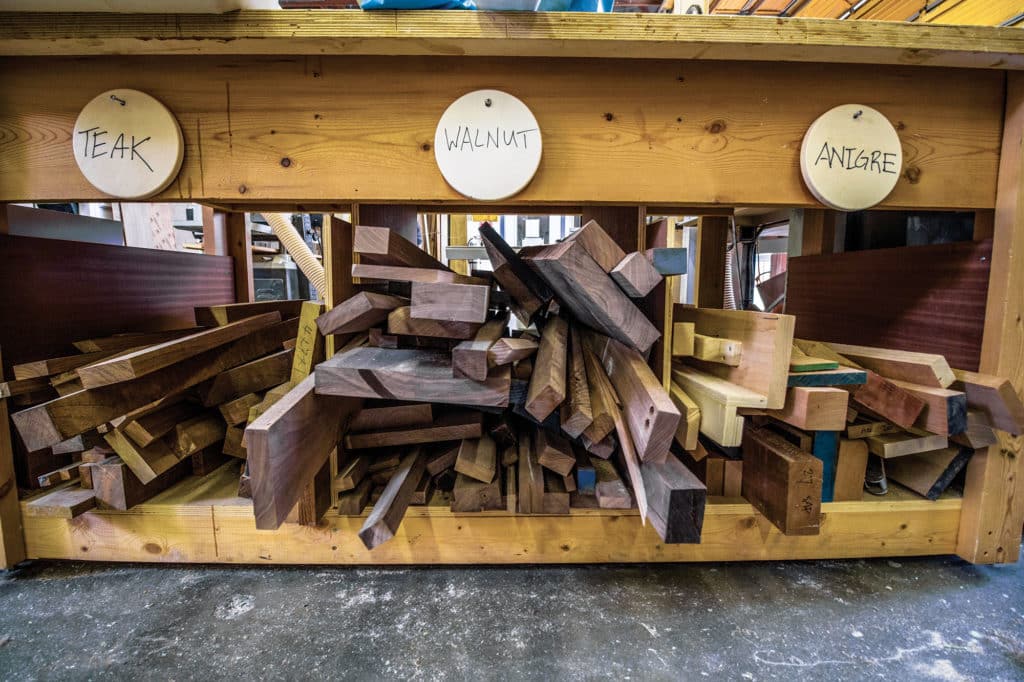
Rhodes expects Coastal Craft to launch 16 new builds this year, and he forecasts 18 more launches in 2019. He remains committed to the Pacific Northwest, and speaks excitedly about the company’s recent eastward expansion. Still, he says, roughly 80 percent of all Coastal Craft builds are enjoyed within a few hundred nautical miles of Gibsons and enable open-water adventures such as crossing the Gulf of Alaska at 30-plus knots.
As for his own bucket-list adventure aboard a Coastal Craft, Rhodes’ internal compass swings north.
“The Northwest Passage is my dream trip, but I’d probably take the 45, not the big one,” he says. “I think it’s the right boat for the trip.”
Technology Leader
In 2007, Coastal Craft became the first shipyard to design and build an aluminum yacht around Volvo Penta’s Inboard Performance System. E-Plex’s Multiplex monitoring digital-switching system became available as an option in 2007, with Genasun’s lithium-ion batteries added to the program in 2010. This combination of IPS drives, batteries and digital switching made Coastal Craft a leader in innovative thinking.
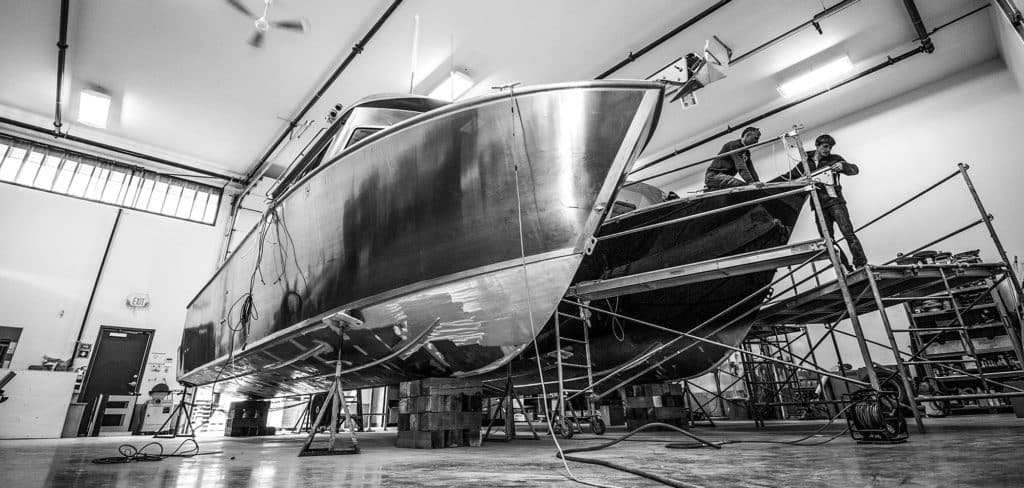
Eastward Ho!
About 80 percent of Coastal Craft’s builds stay within a few hundred miles of the plant in British Columbia, but the qualities that make the boats ideal for the Pacific Northwest also help them excel in other waters. They cruise the West Coast from Seattle to California. In 2015, Coastal Craft partnered with DiMillo’s Yacht Sales in Portland, Maine. Today, 20 percent of new Coastal Craft hulls migrate east.
Northwest Cruising
The Pacific Northwest offers a world-class boating experience with a specific combination of challenges for yachtsmen. The water is cold year-round and is often populated with the errant logs and deadheads that are the byproduct of the area’s logging industry. Factor in huge tidal swings, strong currents, rocky shores and rapidly changing weather, and the need for a strong, dependable yacht becomes obvious.









